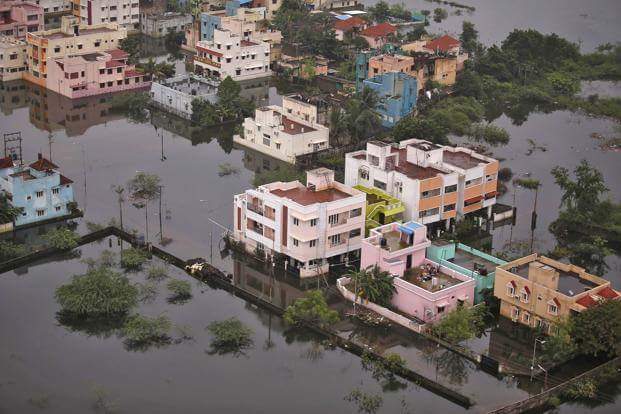Talk by Dr. Pushpa Arabindoo on “Nature of the unprecedented: An anatomy of Chennai floods”

Between November and December 2015, the southern Indian city of Chennai (alongside the northern coastal regions in the state of Tamil Nadu) experienced torrential rains with unanticipated flood consequences. Notoriously known as “India’s water scarcity capital” (Potter 2015: 112), instead of the proverbial ‘poor monsoons’, a series of low-pressure depressions with ‘record-breaking’ rainfall ensured that within days the city submerged rapidly, as homes and apartments flooded, communications were cut, and transportation came to a standstill including the closure of the airport. As Katrina-esque images of a ‘city under water’ circulated through the Internet and international media, those affected on ground were forced to seek some measure of comfort with tales of voluntary heroics of local civilians, too affected to ask the more difficult questions of longstanding socio-political factors that led to the disaster. As environmental activists took the state and its allied actors (mostly in the development and planning sector) to task over what they considered was a deliberate and reckless ‘urbanisation of disaster’, the state sought refuge in the argument that this was a weather anomaly one that was unprecedented.
Recognising the need for a more robust (post) disaster discussion, the objective of this paper is to offer an anatomy of Chennai floods thereby begging a rethink of twenty-first century urban disasters, arguing that the current discourse offered by the social science of disaster is insufficient in unravelling the complex spatial and environmental histories behind disasters. It also goes beyond setting up a mere critique of capitalist urbanisation to offer a cogent debunking of the deeply engrained assumptions about the unprecedented nature of disasters. It does so by dismantling three commonly invoked arguments that transgress any kind of environmental common sense: 1. The 100-year fallacy, 2. The debates that often ensue such events around environmental knowledges and subjectivities, and 3. Rescaling our limited understanding of ‘urbanisation of disaster’.
ABOUT THE AUTHOR:
Pushpa Arabindoo initially trained in architecture (India) and urban design (USA). After completing her PhD in Planning from the London School of Economics, she joined University College London in 2008 as a Lecturer in Geography and Urban Design where she teaches in the inter-disciplinary MSc Urban Studies programme. She also taught in the MSc Building and Urban Design in Development at the Development Planning Unit, the Bartlett from 2008-2011. She is a co-director of UCL Urban Laboratory, a university wide initiative that brings together urban teaching and research across the arts and sciences, ranging from civil engineering to film studies, urban history to architecture, anthropology and archaeology. She is also a lead disciplinary editor (Geography) of the CITY Journal. Since 2003, her research has focused on politics of urban development in the Indian city of Chennai, covering a range of issues from middle class activism to ecological imaginations, slum evictions and resettlement, urbanisation of water and nature, as well as circulations of global architecture in the city. She is currently working on her monograph on Chennai.



